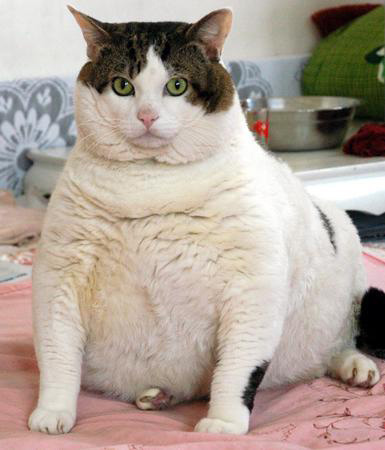New Year’s Resolutions!

America’s gyms are never busier than the beginning of January as everyone makes the resolution that THIS year they will be healthy, they will eat right, and they will get in shape. Well, how about this year, we resolve to help our pets be their healthiest weight possible! At least 50% of our dog and cat population is obese. While there is a common belief that a chubby pet is a happy and content pet, the truth is it leads to many health problems that can be detrimental and even life threatening to our cats and dogs. Overweight pets are prone to arthritis and back injuries, liver and pancreatic problems, and even diabetes. Some cats become so large they cannot groom themselves and can develop skin infections.
It is our duty as pet lovers to set them up for success and give them the best chance at being healthy. For weight loss, it is simple in theory, but hard in practice: they must eat less calories than they burn. While increasing activity is incredibly beneficial and necessary in any weight loss program, our four legged pets are very efficient movers, and walking 2 miles for a dog does not burn the calories that it does for us 2 leggers. We must decrease the calories ingested.

For a good starting point, just like in people, create an honest food log. Note everything they eat for a few days- measure how much food you normally give them (No Cheating!), log every treat, milk bone, and any table food or other food ingested. Often when we do this, we are surprised at how many treats and snacks we are giving, and this is the first area to control. I try to limit to 2-3 small treats a day, and if possible, use the dogs kibble as a treat as it is more nutritional than the empty calories of milk bones. Next, reduce the volume of food being fed by about 10 %, 15% if more severe weight loss is needed. Finally, lace up your shoes, grab that leash, and head out for a walk. Even if it’s just a few blocks, get started, and try to go a bit further every time. One you pup is more conditioned, fetching the ball or jogging can be started as well. To protect your dog’s joints, try to avoid sharp turns at speed, running on uneven ground, or jumping up into the air for a ball or toy. Always make sure your dog has plenty of water and don’t push them to exhaustion.
If your dog or cat is not losing weight despite solid efforts, consult your veterinarian. There are prescription foods that can help with weight loss, and there are a number of conditions your vet can test for that may be preventing your pet from getting to their optimal weight.







